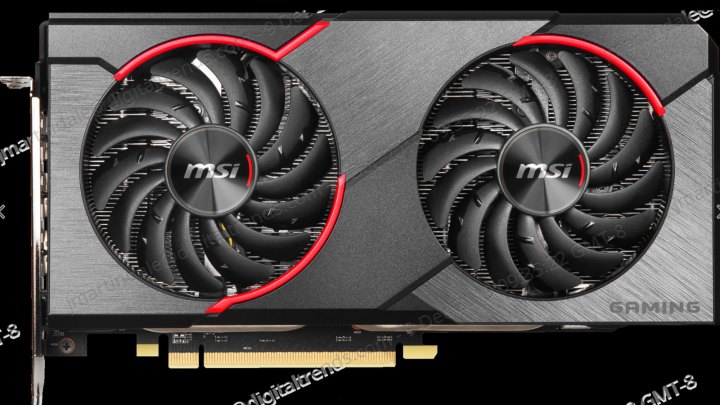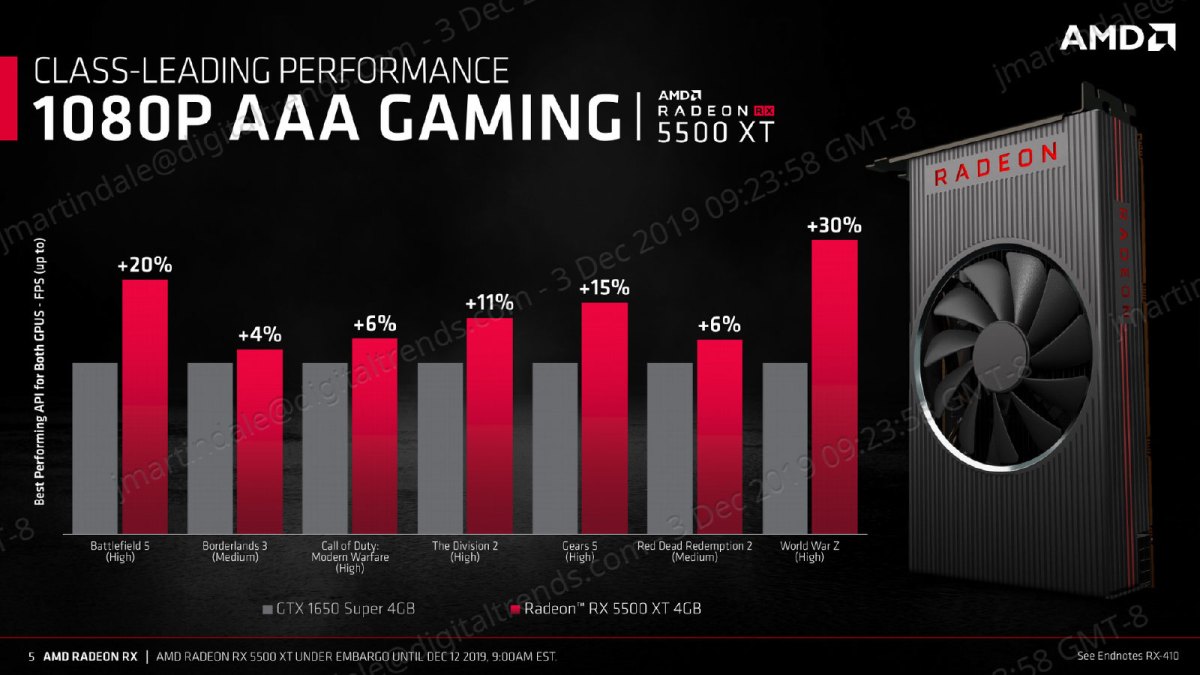
AMD has finally expanded its RX 5000-series graphics cards outside of the RX 5700 and 5700 XT. The new 5500 XT is an entry-level graphics card designed to replace the aging Polaris GPUs like the RX 580 and 590. It claims to offer enough performance to pull ahead of even the Nvidia GTX 1650 Super, though aggressive pricing from the Green Team could make it a difficult choice between the two platforms.
Since the debut of the first RDNA-based, Navi graphics cards from AMD in July 2019, we’ve been clamoring for a more expansive lineup. The RX 5700 and 5700 XT are great competition for the RTX 2060 Super and RTX 2070, but what about the rest of the lineup? While we await a “Big Navi” to take the fight to the high-end RTX 2080 and above graphics cards in 2020, AMD has finally released something more contemporary than its still-competitive, but aged RX 500 Polaris GPUs.
| Radeon RX 5700 XT | Radeon RX 5700 | RX Radeon 5500 XT | RX 580 | |
| Stream processors | 2,560 | 2,304 | 1,408 | 2,304 |
| Base clock | 1,605MHz | 1,465MHz | n/a | 1,257MHz |
| Game clock | 1,755MHz | 1,625MHz | 1,717MHz | n/a |
| Boost clock | 1,905MHz | 1,725MHz | 1,845MHz | 1,340MHz |
| Memory | 8GB GDDR6 | 8GB GDDR6 | 4/8GB GDDR6 | 4/8GB GDDR5 |
| Memory speed | 14Gbps | 14Gbps | 14Gbps | 8Gbps |
| Memory bus | 256-bit | 256-bit | 128-bit | 256-bit |
| Bandwidth | 448GBps | 448GBps | 224GBps | 256GBps |
| TDP | 225w | 180w | 130w | 185w |
| Price | $410 | $330 | $170 ($200 for 8GB) | $170 |
The RX 5500 XT is very much a cut-down version of the 5700, with significantly fewer stream processors but a higher clock speed to counter it. Its memory bus is limited to 128-bit, which is why its overall bandwidth falls behind that of the RX 580, even though its GDDR6 memory is almost twice as fast.

In first party benchmarks shown to Digital Trends in advance of the 5500 XT’s release, AMD touted it as a killer 1080p gaming card, pitting its 4GB version directly against the Nvidia GTX 1650 Super. It highlighted how in a handful of games, the RX 5500 XT 4GB was between 4% and 30% faster, depending on the title. The $200 8GB version, we were told, was around 20% faster than the 4GB version, delivering performance that surpasses the RX 590.
Those results mostly played out when the embargo lifted on reviewers. Eurogamer’s testing it found that the 5500 XT 4GB nudged ahead of the GTX 1650 Super in both average framerates and 1% lows in all games, sometimes by a sizable margin. The 8GB RX 5500 XT extended that lead into 1660 territory in some games, but less so in others, suggesting that it will only be noticeably more capable in games that can take advantage of its additional 4GB of GDDR6.
Anandtech reported similar findings, with both 5500 XTs beating out the 1650 Super in most tests, though it found little difference between the 4GB and 8GB version in some games. HotHardware’s results were much the same.
Owners of the Vega 56 can rest easy, as your once high-end GPU isn’t quite ready to be supplanted by an entry-level card. The real elephant in the room though, at least while stocks last, is the RX 590. It might be far less efficient than either of these new GPUs, but it is competitive and even outpaces the 8GB model in some tests. Since it’s still available at around the $190 mark, it’s a worthy consideration for anyone looking at a new GPU this holiday season.
Starting today, there are a wide variety of RX 5500 XTs available from all the major manufacturers, including ASrock, Asus, MSI, PowerColor, Sapphire, and more. They offer different clock speed and cooling configurations, though be aware that once the price goes far north of $200, you are likely better off paying for a 1660 Super instead.
The 5500 XT is available now starting at $170 (or $200 for the 8GB version) and is bundled with a copy of Monster Hunter World: Iceborne and three months of the Xbox Game Pass.
Editors' Recommendations
- AMD’s graphics card sales just took a nosedive
- Nvidia RTX 50-series graphics cards: news, release date, price, and more
- The Nvidia RTX 4080 Super just trounced AMD
- I tested AMD’s RX 7600 XT against the RTX 4060 — and I was shocked by the results
- Here’s how AMD counters Nvidia’s big RTX Super launch




